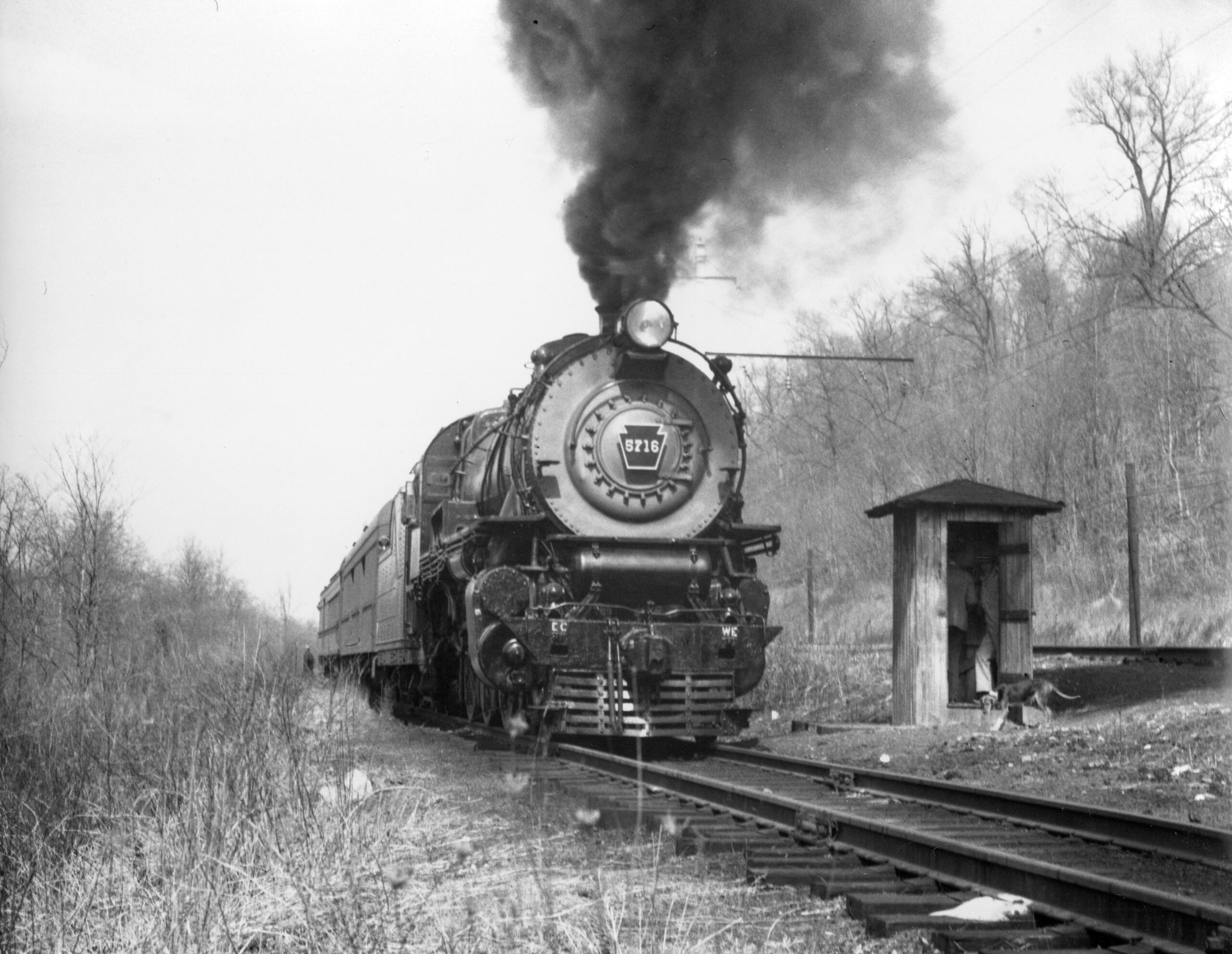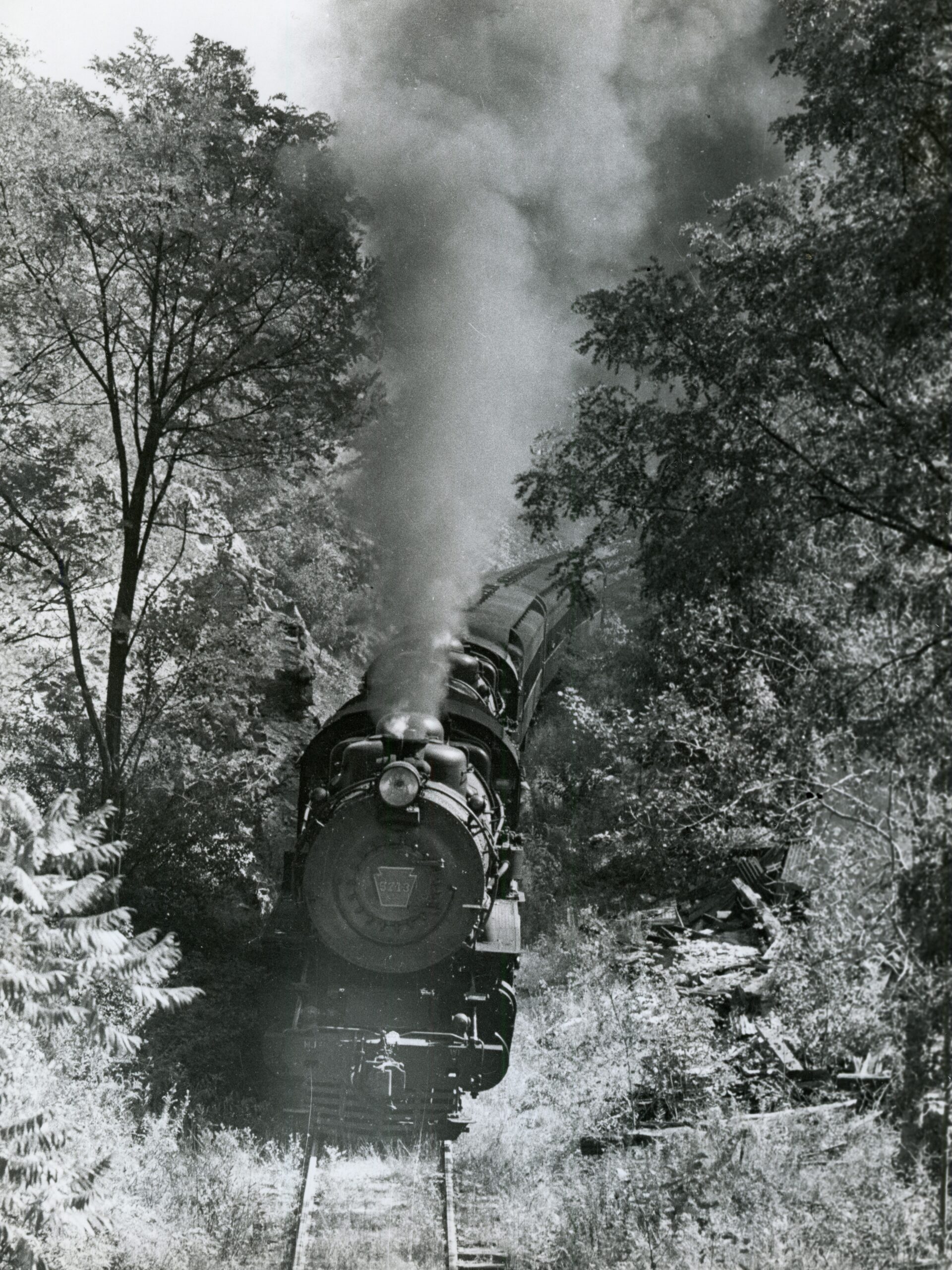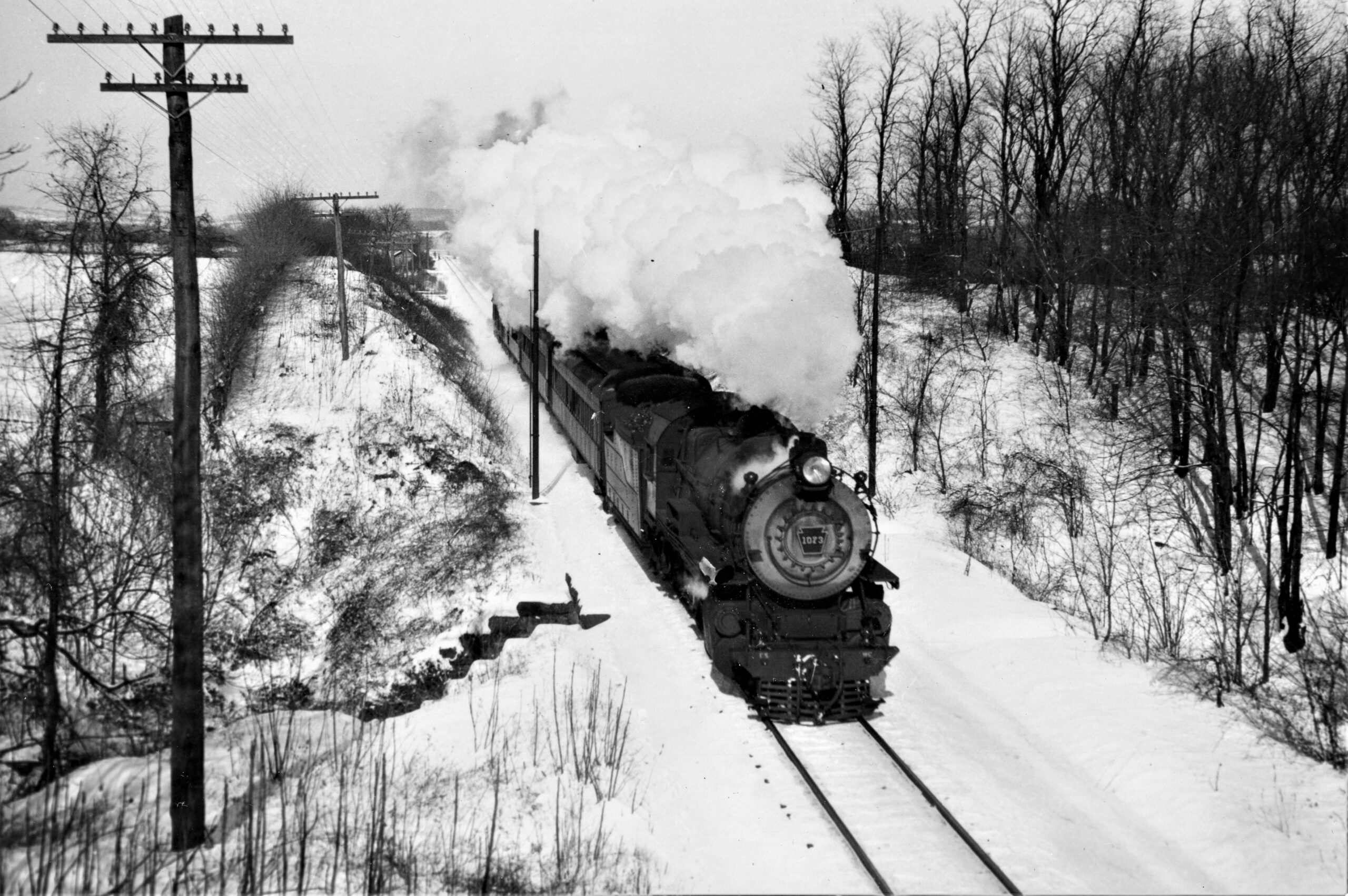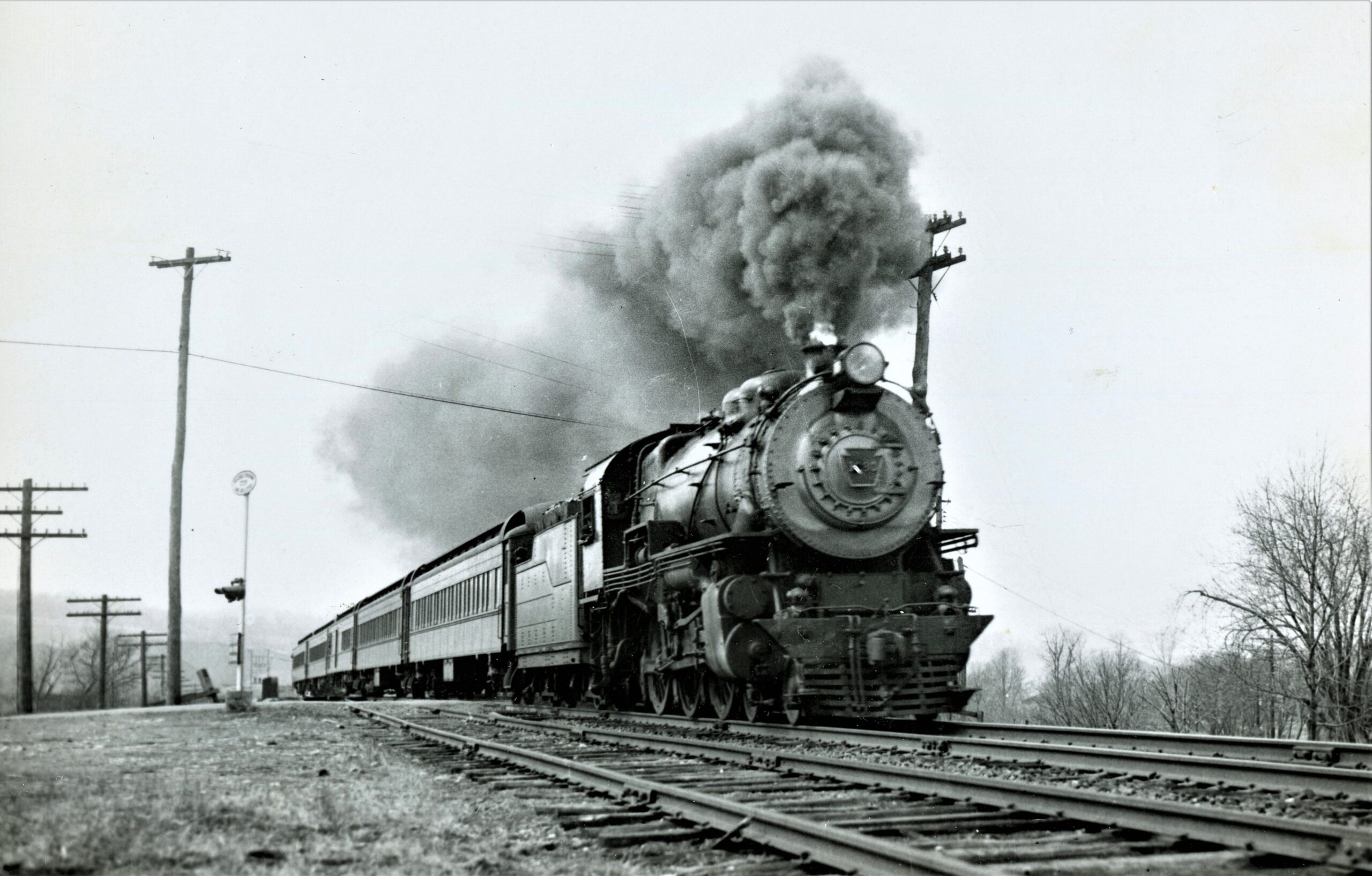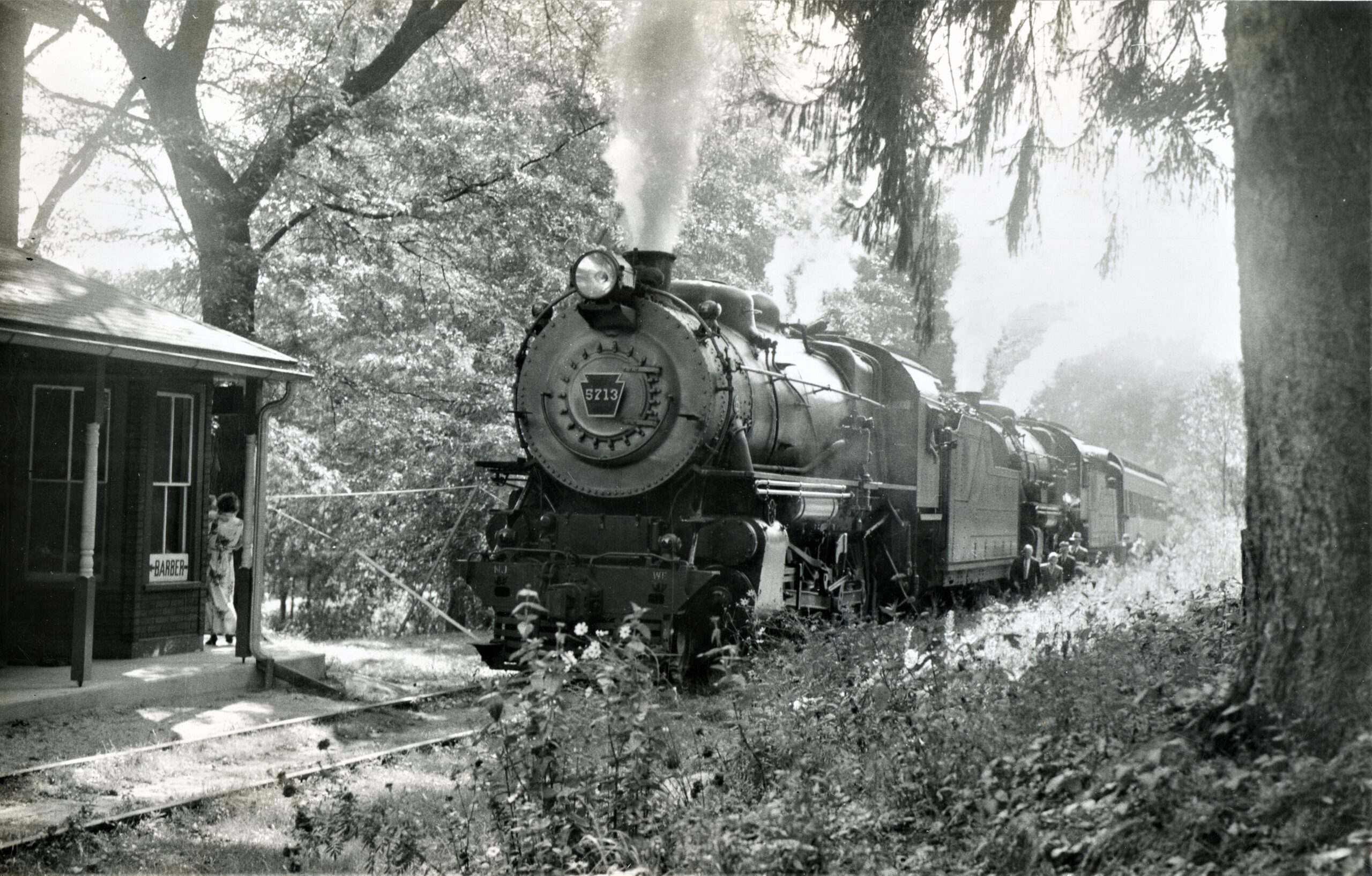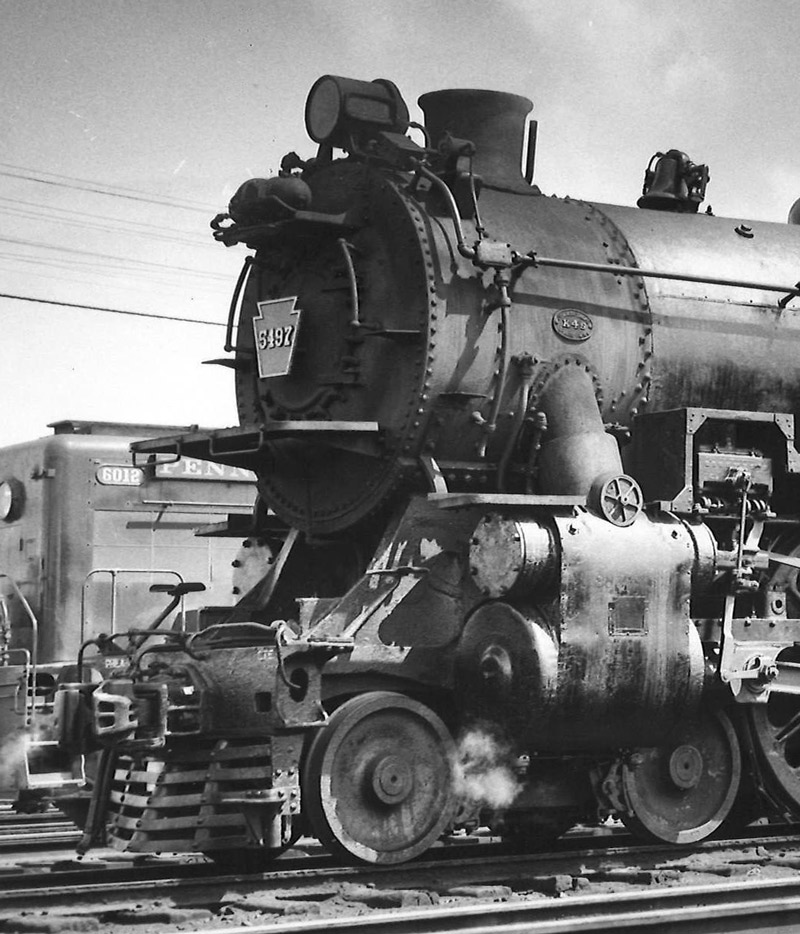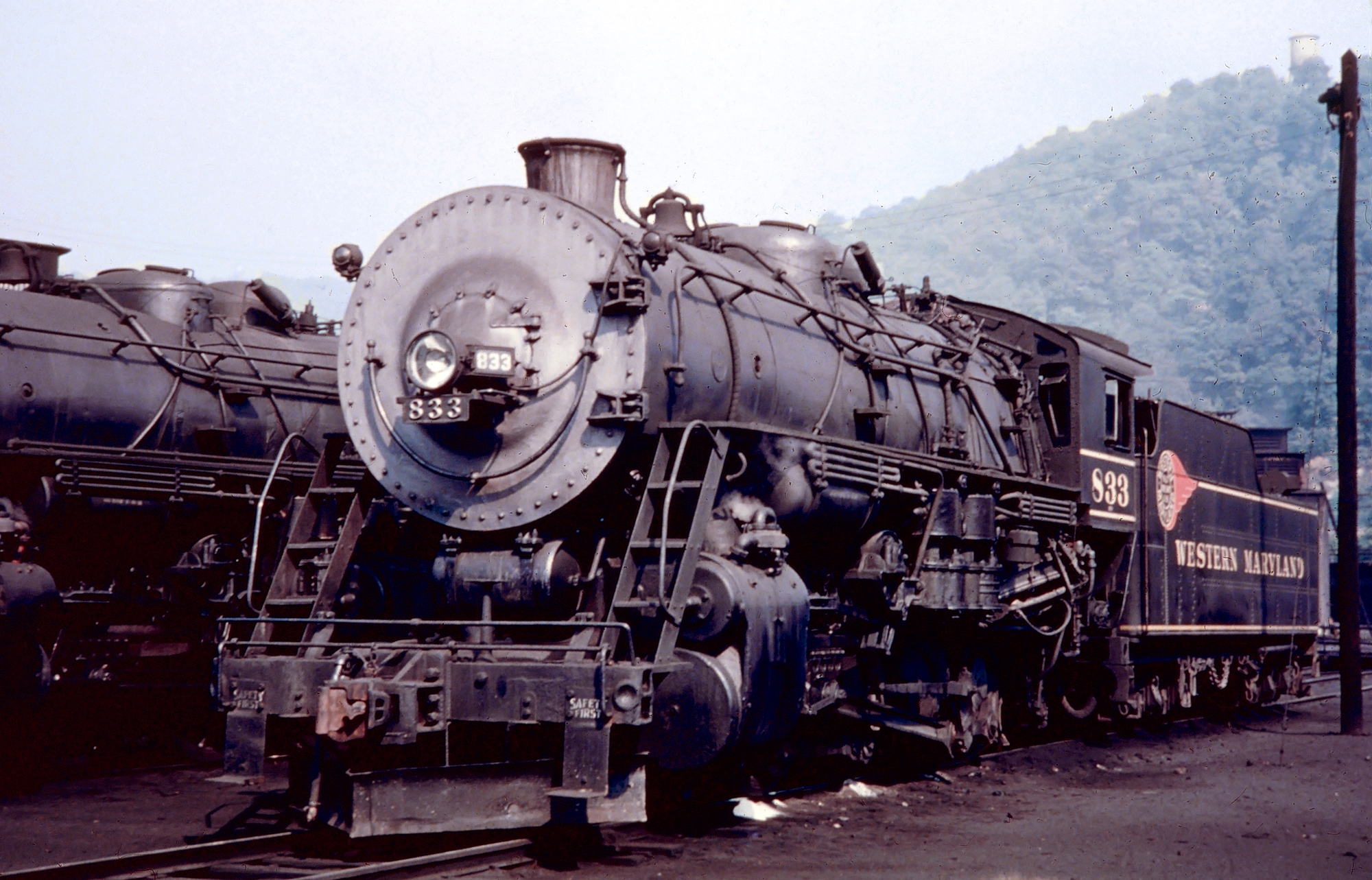There's two other G5s as well, one LIRR and one PRR. The PRR engine, #5741, was part of their corporate collection at Northumberland and is indoors in immaculate condition at the Railroad Museum of Pennsylvania.

The other LIRR engine, #35, handled the last LIRR steam runs with the #39 and then was donated to Nassau County afterwards. Like the #39, there's been a few attempts to get the #35 operational.Around 1978, the Black River & Western had worked out an agreement to restore #35 for use on their line. I do not know the exact details of the plans but from what I have heard is that there was a concession that the enginee would run a trip on Long Island so many times a year. Supposedly, the owner of the BR&W passed away and the project was not continued after that. A number of members of the local NRHS did work on getting #35 into running order. The running gear was disassembled, the bearings were turned, new or renewed shoes and wedges were machined, and I believe new tires were put on, with the work being done at Amtrak's Wilmington shops. Wilmington would have been equipped for that since they were still servicing GG1s at the time.
Strasburg also looked into getting #35, went as far as getting a boiler ultrasound test, but Nassau County, who owns it, didn't want it to leave the Island. And then around 1983-1984, the Blue Mountain & Reading (precursor to Reading, Blue Mountain & Northern and Reading & Northern) approached the keepers of #35 to work out a long-term lease for operation on the Hamburg-Temple former PRR Schuylkill Valley Branch, a place where G5s operated and were still remembered 30 years ago. Hopes were high enough to warrant the production of hats bearing a patch with #35 on one side and some diesel on the other side. I don't know the official reason the lease deal fell apart but during the summer of 1984, Mr. Muller purchased #425 and that appeared to be the end of any #35 deal. Presumably it may have run into the same issue that Strasburg had, where Nassau County didn't want it going that far afield.
In 1990, the plan was made to move the #35 to the Oyster Bay Railroad Museum's grounds at the old LIRR Oyster Bay yard and roundhouse, which is where the LIRR G5s spent their final days handling commuter runs. The plan is for a cosmetic restoration, since LIRR and MTA have no interest in allowing steam excursions and I believe OBRM lacks a connection to live rail. But, the plan is to overhaul the running gear to running condition so that if an opportunity arose, the #35 would just need appliance and boiler work to be put into operation.









